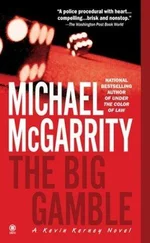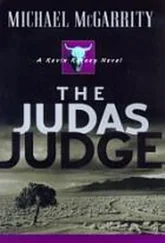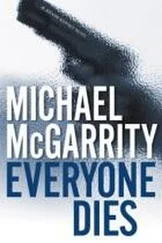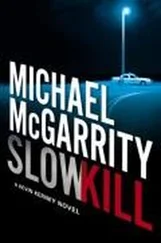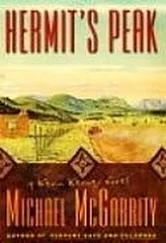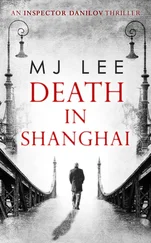The neighborhood canvass was over and nobody interviewed had seen or heard anything until the sound of the shotgun blast had broken the silence of the night. A three-block radius around the crime scene had been searched for any sign left behind by the perpetrator, and nothing had been found. A fresh search would be done in daylight, but Clayton had little hope that any valuable evidence would materialize.
The state police crime scene techs had collected at least a dozen different fingerprints from the exterior and interior surfaces of Riley’s cabin, which quite probably belonged to Riley and everyone else who had rented the place as a vacation retreat over the last six months. Although there were no signs of a forced entry, Clayton had the techs bag and tag every piece of personal property belonging to Riley, along with the bedding, bathroom towels, and the dishes in the sink that were supplied to renters by the owner of the cabin. When that was accomplished, he had the techs vacuum the floors before turning them loose on Riley’s police vehicle. It was a scatter-gun approach to evidence collection, but Clayton knew that every homicide left a trace, and if one blot, smudge, stain, scratch, fiber, or speck was overlooked, the killer could get away with murder.
Dawn came with a stiff wind that blew dust, tumbleweeds, and brown, brittle cottonwood leaves across streets, sidewalks, and lawns. Clayton assembled a group of officers, including Sheriff Hewitt and Chief Bolt, and carried out another three-block search for evidence. Every piece of loose trash and litter that hadn’t been blown away by the wind was bagged and tagged, every tire track and skid mark was photographed, and every parked vehicle was inspected and run through Motor Vehicles.
When the officers returned to the cabin, EMTs were rolling Riley’s body on a gurney to an ambulance that would transport his remains to Albuquerque for an autopsy to determine the cause of death, which in this case would be a formality. All night long Clayton had wondered what had become of the rifled shotgun slug that had taken Tim Riley’s life.
He stood facing the cabin about six feet from where Tim Riley’s body had fallen. The slug had caught Riley in the head straight on, but from the position of the body on the ground it was impossible to tell if Tim’s head had been turned or if he’d faced his killer squarely.
If Riley had faced his killer straight on, the slug would have missed the front of the cabin by a good ten feet. If the killer had fired from a slight angle to the right, the spent slug should be lodged somewhere in the front of the cabin. It wasn’t. If the killer had fired from the left, the slug could be buried in a tree trunk or the back porch of a neighboring house. It wasn’t.
Clayton scanned the cabin, wondering where the spent slug might be. Because he didn’t have the murder weapon, didn’t know the gauge of the shotgun, and could only estimate how close the shooter had been to the victim, it was mostly guesswork.
“What are you studying, Sergeant?” Paul Hewitt asked as he walked up.
Clayton looked at the sheriff. “Angles.” He shuffled through the Polaroid photographs he’d taken of Tim’s body. The entry wound at the front of Riley’s head looked slightly lower than the exit wound at the back of his skull. Clayton noted the difference to Hewitt. “I think the killer may have been shorter than Riley. Either that, or he just raised his weapon at an angle and fired from the hip.”
“Wouldn’t that make it a lucky shot?” Hewitt asked.
“Not from such a close distance,” Clayton replied, returning the photographs to his shirt pocket. “A typical shotgun has a twenty-four-to twenty-eight-inch barrel. If you’re firing a long-barreled weapon from a distance of four to six feet, muzzle end to target, it would be pretty hard to miss what you’re shooting at. And there might not be any powder residue on the victim. Personally, I think the killer deliberately took the head shot. Riley was my height, five feet ten. I make his killer to be two, maybe tree inches shorter. I wonder how tall Riley’s wife is.”
“You think she’s the shooter?”
“I don’t know enough about this crime to exclude her as a suspect.”
Hewitt looked at the cottonwood tree, at the cabin, at the neighboring house, and then at Clayton. “So where’s the spent slug?” Hewitt asked.
“Maybe it’s lodged in the cabin roof.”
Hewitt scanned the roof. It was a pitched, shingled roof with a protruding metal woodstove flue. “I went over Riley’s radio traffic with dispatch,” he said. “Except for the brawl at the Carrizozo bar and a fifteen-minute coffee break with Craig Bolt, Riley made no contact with anyone else after he left the crash scene.”
“We can’t be completely sure of that,” Clayton said.
“I know,” Hewitt replied. “But if Riley did encounter someone unofficially without notifying dispatch, it happened toward the end of his shift.”
Clayton nodded and said nothing. It wasn’t unusual for the sheriff to cruise the county at odd hours without notifying dispatch that he was on duty. It was a good way to stay on top of what the troops were doing in the field. He wondered if Hewitt had shadowed Riley during the early part of his shift.
“I’ll ask Chief Bolt to find you a ladder,” Hewitt said.
“I’m also going to need something other than my truck to drive,” Clayton said.
Hewitt glanced at the Ford Explorer that had been assigned to Tim Riley less than sixteen hours ago. “It’s got a rebuilt engine, good tires, and a new clutch.”
Clayton nodded. It was either the Explorer or the only other available sheriff’s vehicle, a six-year-old Crown Victoria that needed new shocks, burned over a quart of oil a day, and was about to throw a rod.
“Ten-four,” he said, not completely happy with the idea of driving the murdered deputy’s unit.
“I’ll get you that ladder,” Hewitt said as he went to find Bolt. “Be careful when you climb up there.”
Clayton stared at Tim Riley’s unit. It was an Apache tradition to believe newly deceased people wanted to have some of the living journey with them to the other side. The most dangerous time for this to happen was the four days after death, when the dead person was still present, although invisible. During this period, they revisited the critical events in their lives and remained close to the important people they were about to leave behind.
Clayton figured getting murdered had to be an event of great consequence for Tim Riley, one he would definitely have to revisit. That meant Riley’s invisible presence would be hanging around over the next few days, and Clayton would have to stay alert and balanced to avoid any witchery that might come his way.
A village fire engine pulled to a stop on the street. A firefighter climbed out of the cab, waved at Clayton, and asked where to put the ladder. Clayton pointed to the spot and helped the man carry the ladder to the side of the cabin. He spent an hour on the roof inspecting every fiberglass shingle, examining the plumbing vent protrusions, and studying the woodstove flue. He checked the eaves, the gutters, and the downspouts. He went over every inch of the side of the cabin, high and low, where the slug could have impacted. He looked for any evidence that it could have ricocheted. Finally he gave up, climbed down, and helped the firefighter put the ladder back on the truck.
“There’s nothing up there,” Clayton said before Hewitt had a chance to ask.
Hewitt handed Clayton a piece of paper. “This is a list of the people we know Riley had contact with since he moved down here. There may be more.”
There were over thirty names on the list. Some worked at local businesses, several were real estate agents, and a few were people Clayton had introduced to Riley earlier in the week.
Читать дальше

